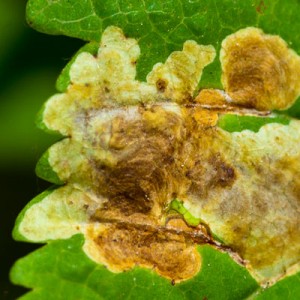Horse Chestnut leaf miner moth – an App

Many people have been following the various blogs (and contributing comments) on the problems that Horse Chestnut trees have faced over these last few years. These problems include :-
- bleeding canker
- leaf blotch fungus
- leaf miner moth
The horse chestnut leaf miner moth, which originated in the Balkans, first appeared here in 2002/3 in the South East, but it has since rapidly spread to many areas of the U.K. The Forestry Commission has been recording its distribution, and a map is available here. There is seemingly little that can be done (at present) to stop the advance of this insect except specific hygiene measures.
However, for the technologically minded there is now an App - LEAF WATCH available for smart phones (android and iPhone). Whilst this will not help with the problems of any specific tree or trees, it will enable you to contribute to further research by sending a report about any horse chestnut tree in the UK. This will allow information about the spread of the leaf miner to be collected. Information is required on the damage to infected trees but also details of undamaged ones. 
Further information about the work of scientists from the Universities of Hull and Bristol, involved in this project, can be accessed at http://www.ourweboflife.org.uk/index.html
Using the App involves taking a photo of a leaf with the smart phone, confirming your location and assigning a damage rating, plus noting what you see underneath the tree. The photo of leaf should be one that is typical of the leaves near the bottom of the tree, and the damage rating assigned according to the scale.
It is important to distinguish between the damage done by the leaf miner, and that done by the leaf blotch fungus (creates patches that are brown edged with yellow). Often the larva can be seen through the translucent (epidermal) tissue of the leaf - the internal tissues have been ingested by the animal (see 'featured' / top photograph).
Comments are closed for this post.
Discussion
Last year,2011, all the trees near me were affected. So far this year no evidence of any leaf mining, will check more sites. JGGuest 01/07/2012
True, the horse chestnut is an introduced species (probably in the C17th) but unlike Sycamore (another introduced species) it is not invasive or a threat to native species, partly because young trees need a deep and moist soil in which to become established (and mature trees need a lot of space). It was mainly planted for its ornamental value, being appreciated for its shape, flowers, and conkers (which have been popular for many years). Living in South London, I find their greenery and flowers impressive in the Spring, and it is sad to see them brown and wizened by August.
http://apps.kew.org/trees/?page_id=98
People seem quite concerned about the state of the trees – see http://www.woodlands.co.uk/blog/trees/horse-chestnut-woes-dealing-with-disease/); severe and early defoliation will affect the trees – in terms of resistance to attack by other organisms, ability to produce conkers etc, reduced ability to produce and store starch & storage materials for the winter months etc. It is quite probable that with the various organisms attacking the trees that some of them will succumb.
I’m curious as to the hype over this moth. It doesn’t kill trees, it simply turns some of the leaves brown. It’s also worth highlighting that the horse chestnut is not a native species to the UK and it’s demise in the UK would arguably be a good thing.

Up here in Glasgow I have witnessed one Horse Chestnut die of bleeding canker this year. Most of these trees came into leaf in early March due to good weather however this one tree quickly went yellow/ brown colour and shed all leaves by late May. The council have marked it to be chopped down. However I have noticed lots of trees some mature suffering some signs of bleeding canker and by July most of the crown is turning pale green. One mature tree (50ft high) has done this every year and even goes in autumn colours by mid August so not sure how bad this tree is affected. Leaf blotch not too bad this year. Not all bad news as even now into mid September there are plenty of Horse Chestnuts where the whole tree is dark green (something not seen further south) healthy looking and no autumnal colours either. Plenty of conkers on these trees too.
PRguest
12 September, 2012